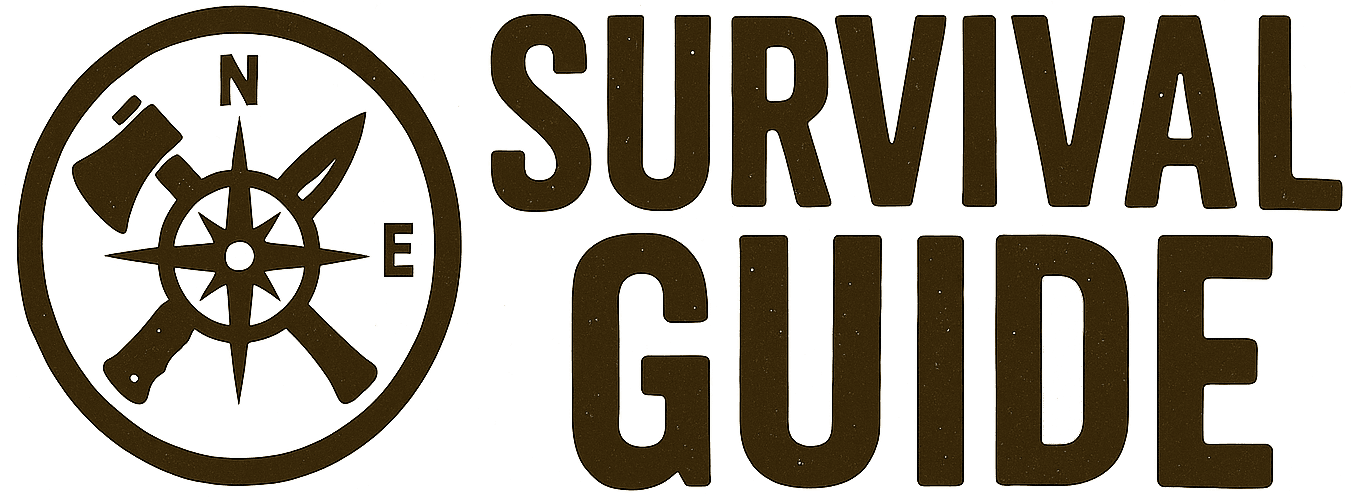When the grid goes dark and law is just a memory, you won’t rise or fall by how many tins you’ve stored — you’ll survive because you can protect yourself. Whether it’s defending your family, deterring threats, or putting meat on the fire, the right weapons aren’t about violence — they’re about survival.
This isn’t a fantasy list for action films. These are real, field-tested tools every prepper can rely on — weapons you can carry, maintain, and wield when there’s no one else to call.
The Golden Rule of Survival Weapons
Forget flashy gear and oversized blades. A weapon is only as useful as:
- Your ability to carry it every day
- Your skill in using it under pressure
- Its reliability when everything else fails
Every prepper’s arsenal should prioritise practicality, legality, and adaptability.
The Core Survival Weapons
1. Fixed-Blade Knife (Your Lifeline)
A survival knife isn’t just for defence. It’s your cooking tool, wood splitter, and emergency weapon.
- Look for: Full-tang, 4–6 inch blade, high-carbon steel.
- Avoid gimmicks (hollow handles, “Rambo” blades).
- Practice: Fire starting, shelter building, and quick deployment.
2. Hatchet or Compact Axe
Doubles as a tool and weapon.
- Ideal for splitting wood and as a last-resort defensive option.
- Compact enough to carry, heavy enough to hit hard.
- Keep it shaving-sharp and oiled — dull steel is dangerous.
3. Tactical Flashlight
Not a toy — a 1,000-lumen flashlight can blind a threat, signal for help, or serve as a striking tool.
- Choose aluminium body and rechargeable batteries.
- Train to use it in combination with a knife.
4. Pepper Spray (Low-Lethal Deterrent)
When you can’t risk lethal force, pepper spray buys you escape time.
- Compact, legal (in most regions), and effective.
- Always test the canister and know your range.
5. Improvised Weapons
When things get truly desperate, almost anything can be a weapon:
- Heavy torch, trekking pole, or even a sock with a stone can be decisive.
- Learn improvised striking techniques — your environment is your armoury.
Weapons for Hunting and Food Procurement
Defence is one side of survival — feeding yourself is the other.
Depending on your local laws and skill, consider:
- Slingshot: Quiet, light, excellent for small game.
- Bow: Reusable ammo, powerful, and nearly silent.
- Air Rifle: Legal in many places and perfect for small game.
Firearms are effective, but ammo runs out. Silent, sustainable tools often serve preppers better in the long haul.
Training Over Toys
The best weapon you can carry is competence.
- Learn basic defensive stances, strikes, and situational awareness.
- Practise with your tools regularly — stress drills, not just backyard swings.
- Take a self-defence or bushcraft course if you haven’t yet.
The Gideon Rule
Weapons won’t save you if your mindset is weak. Survival is 80% preparation and awareness, 20% hardware. Carry what you can use, train until it’s instinct, and never forget: every tool you carry should serve at least two purposes.
Quick Checklist: Building Your Survival Weapons Kit
- Full-tang fixed blade knife (4–6 inch)
- Compact hatchet or axe
- 1,000+ lumen tactical flashlight
- Pepper spray (tested and legal)
- Slingshot or bow (for hunting)
- Knowledge of improvised weapon techniques
- Training: Defensive and bushcraft skills
Conclusion
When the system cracks, there won’t be police on the line or 999 to call. Your skills, tools, and resolve will be the only things standing between you and the chaos. Build your kit, practise with it, and trust nothing but what you can wield.


